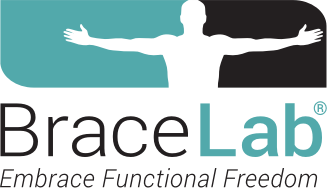Stretching the Transverse Carpal Ligament?

July 2022 No. 74
Stretching the Transverse Carpal Ligament?
by Karol S. Young OTD, OTR/L, CHT
Finding time to read professional journals can be challenging, as my bedside reading stack attests. My recent onset of carpal tunnel syndrome symptoms (self-diagnosed) finally urged me to read one saved article: “Effective self-stretching of carpal ligament for the treatment of carpal tunnel syndrome: A double-blinded randomized controlled study.”(1) Because of the high level of evidence of the study design, I was eager to discover the study outcomes.
The Studies
Shem et al.’s study evaluated the effectiveness of self-stretching of the transverse carpal ligament.(1) The authors modified the self-stretching technique of Sucher(2) to enable their participants to independently stretch at home. Whereas Sucher described the benefits of combined osteopathic manipulative treatment to the transverse carpal ligament followed by the self-stretching in four patients, Shem and colleagues used only the modified self-stretching technique, reporting improvement in five of their twelve outcome measures.
Sucher instructed his subjects to stretch the wrist and fingers into extension with the forearm supinated and the elbow supported against the iliac crest so the body weight could assist in the stretch. The thumb metacarpal is pulled into extension and abduction by the other hand (See Figure 1).


Figure 1: Sucher’s method for self-stretching the transverse carpal ligament
Shem et al. instructed their subjects to self-stretch with the forearm pronated and the palm and fingers against a wall while standing. With the wrist at 90 degrees and fingers extended, the other hand retracts the thumb metacarpal (See Figure 2). Having learned that maximum wrist extension increases median nerve pressure and thus is contraindicated with carpal tunnel syndrome (CTS), I was curious to see if I could replicate the positive study results and reduce my own symptoms.(3)


Figure 2: Shem et al.’s method for self-stretching the transverse carpal ligament
Using the Evidence to Treat Myself
I had been experiencing nocturnal sensory symptoms of numbness and tingling in the median nerve distribution in my right dominant hand for about two months. My symptom onset could not be related to a particular activity or lifestyle change and I did not use any other treatment such as a compression glove or nighttime orthosis. I had no proximal symptoms.
I found the self-stretching method of Sucher more difficult and uncomfortable than the method described by Shem et al., and therefore began the Shem et al. stretching technique for a duration of 30 seconds, four times each day. Although the study participants completed a 6-week stretching program, I stopped the stretching between week four and five because my symptoms were resolving, causing me to forget to perform the stretches. I have now been asymptomatic for more than two months. If symptoms return, I plan to begin the stretches again.
Using the Evidence to Treat My Patients
Having experienced resolution of my own early-stage symptoms, I initiated the same self-stretching technique with nine CTS patients. Six of the nine patients were referred with a primary diagnosis of CTS, two had developed CTS after surgical repair of a distal radius fracture, and one patient developed CTS following a palmar fasciectomy for Dupuytren’s Contracture.
All patients initiated the self-stretching program as outlined above except for the two patients who had undergone surgery for a distal radius fracture; they were unable to position the wrist into 90 degrees of extension. These two patients placed the symptomatic hand on a tabletop instead of the wall, stretching to maximum tolerable wrist extension, while the opposite hand retracted the first metacarpal (See Figure 3).


Figure 3: Modified self-stretching on table top
Two patients were lost to follow up. Of the seven remaining patients, five reported improvement in their symptoms, while the two patients who underwent open reduction and internal fixation for the distal radius fracture reported minimal or no change. All seven patients who completed the stretching reported that the technique was easy to perform and none demonstrated worsening of their symptoms or an adverse reaction. The stretching appeared more effective with patients who had not had surgery or trauma to the nerve.
Although this is a small, informal patient sample, the patient outcomes suggest this technique may be of some benefit and appears to have no adverse effects. I will keep using this treatment technique with future patients to gain further insight, being aware that those with nerve trauma may not be the ideal candidates.
Conclusion
In our day-to-day clinical practice we may not feel connected to formal research published by our peers. Although we may not be able to replicate double-blind controlled trials, we play an important role in assessing the efficacy of positive research interventions. Connecting research to our clinical practice continually challenges our assumed knowledge, pushing us to examine what we really know. When was the last time you attempted to apply research evidence to your practice?
References
1. Shem K, Wong J, Dirlikov B. Effective self-stretching of carpal ligament for the treatment of carpal tunnel syndrome: A double-blinded randomized controlled study. J Hand Ther. 2020;33(3):272-280. doi:10.1016/j.jht.2019.12.002
2. Sucher BM. Myofascial manipulative release of carpal tunnel syndrome: Documentation with magnetic resonance imaging. J Am Osteopath Assoc. 1993;93:1273e1278.
3. Gelberman RH, Hergenroeder PT, Hargens AR, Lundborg GN, Akeson WH. The carpal tunnel syndrome: A study of carpal canal pressures. J Bone Joint Surg. 1981;63A:380–383. doi: 10.2106/00004623-198163030-00009.
Download Clinical Pearl No. 74, Stretching the Transverse Carpal Ligament?, July 2022
© BraceLab; 2022 all rights reserved
Disclaimer: BraceLab Clinical Pearls are intended to be an informal sharing of practical clinical ideas; not formal evidence-based conclusions of fact.
